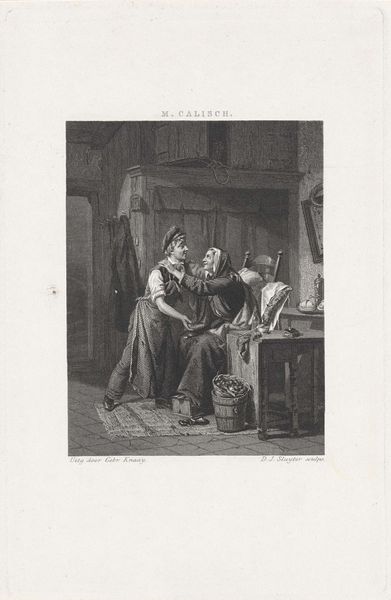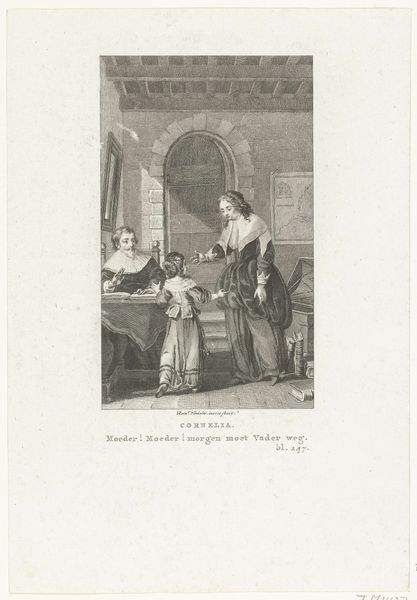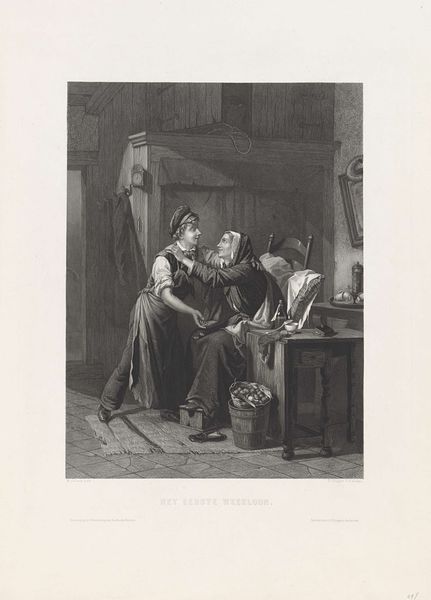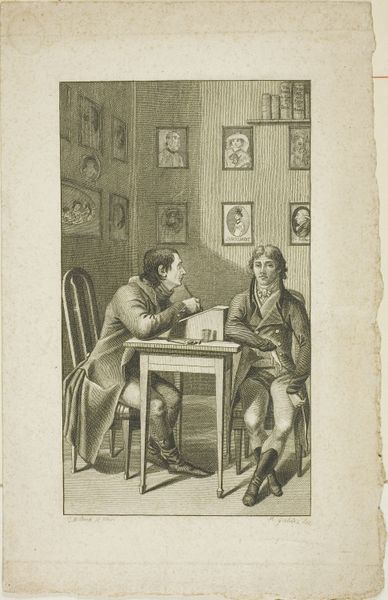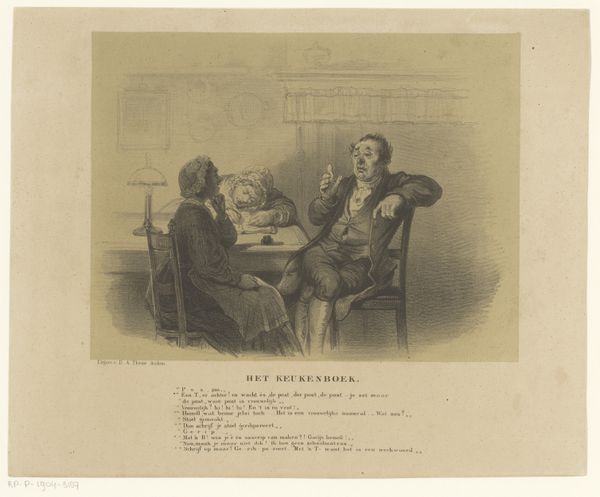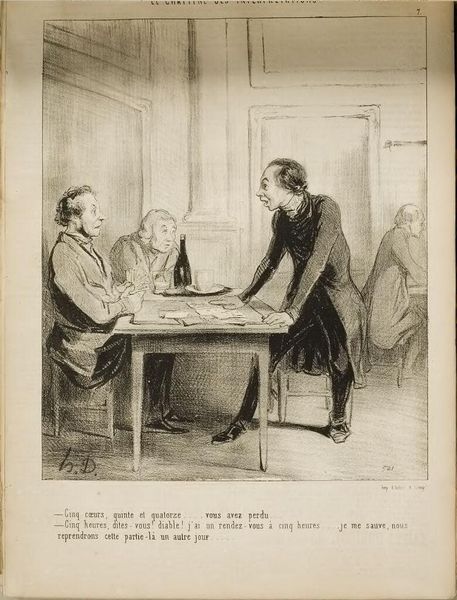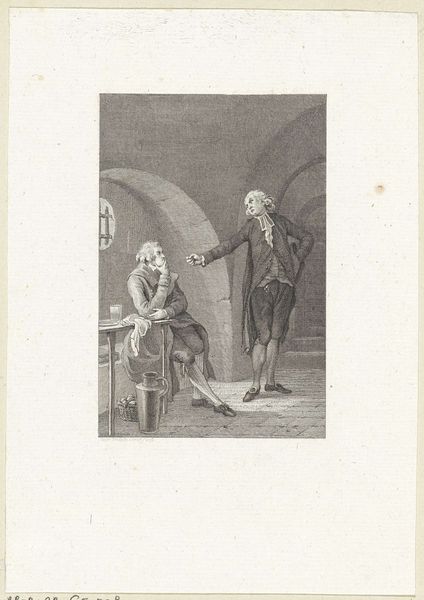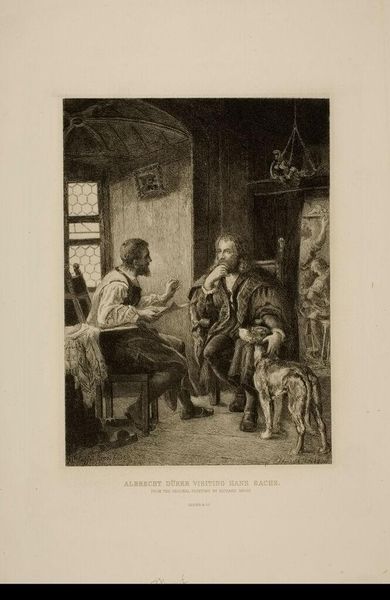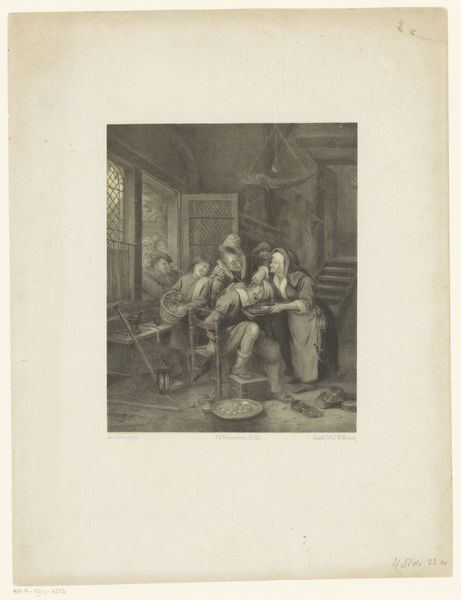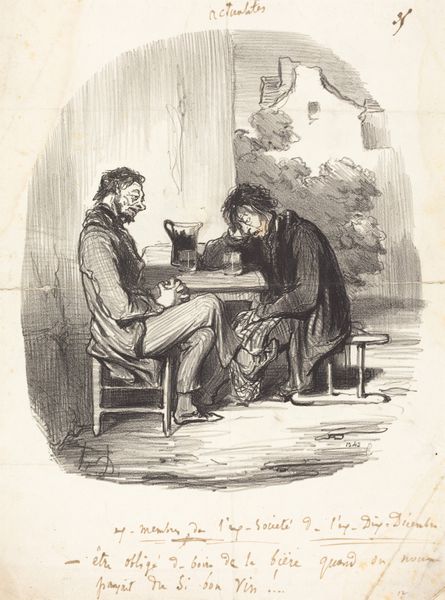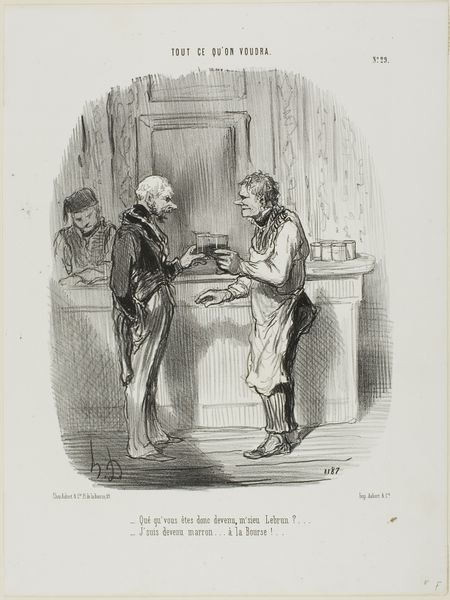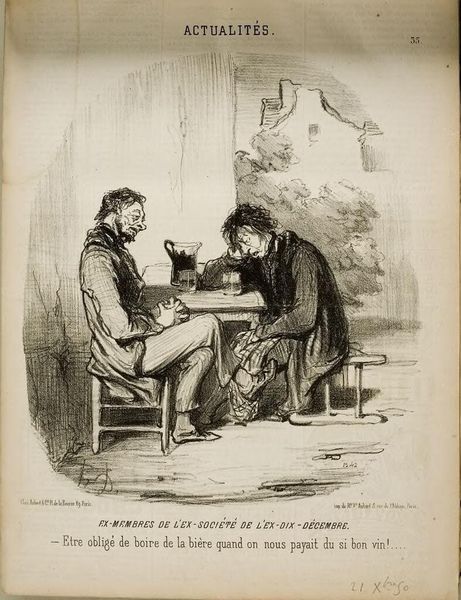
Dimensions: height 363 mm, width 260 mm
Copyright: Rijks Museum: Open Domain
Curator: Arnoldus Cornelius Verhees created this piece, “De Afrekening,” which translates to "The Reckoning," sometime between 1878 and 1879. It's currently housed right here at the Rijksmuseum. My first thought: tense! The whole scene is dripping with anticipation. It’s almost palpable, like a thundercloud about to burst. Editor: The drama, you’re right, it practically vibrates. The engraving is so precise, look at the weight carried in the slumped posture of the seated man, his hand pressed against his temple, and the other character seems a little stern. They both evoke a deep sense of concern and deliberation. The items on the table, possibly currency, enhance the scene's serious, tense atmosphere. The symbols related to settlement of money affairs—debts—appear time and again. Curator: Absolutely. The level of detail achieved with pen and engraving is remarkable. Verhees manages to capture the mood, doesn't he? It’s as though he has somehow gotten inside these people’s minds and onto the scene of where these historical dramas of daily living were happening. Editor: There’s a subtle but powerful psychological dance occurring in the imagery. The man seated in shadow embodies a vulnerability that’s both timeless and culturally resonant. Curator: His slumped posture really speaks volumes, doesn't it? He is physically in a pose we still use to mean pensiveness, rumination, worry, possibly. There’s almost an implication he might be physically ill because she’s visiting him indoors. Is that her doctor's bag? Editor: It could be. The use of everyday objects charged with symbolic weight to deepen a narrative – think the umbrella as representing needing protection against stormy circumstances. You also sense the interior, a traditional place for private and sensitive moments related to our psychological processes. Curator: Knowing that it’s based on a work by B. Wolter sheds some light. It almost feels as though Verhees took a perfectly composed moment of storytelling and gave it another layer of, well, feeling. Editor: Perhaps we see him reflecting a social unease in art through these commonplace visual tropes. Curator: The way that financial anxiety transcends time. The visual weightiness of that—how skillfully that translates through art and history, you know? Editor: It speaks to something very human.
Comments
No comments
Be the first to comment and join the conversation on the ultimate creative platform.
